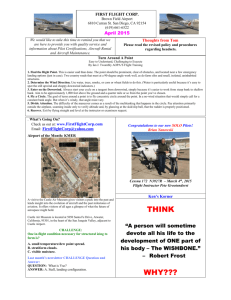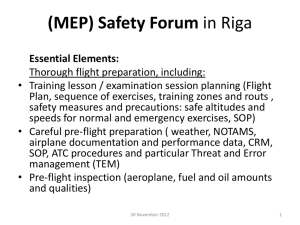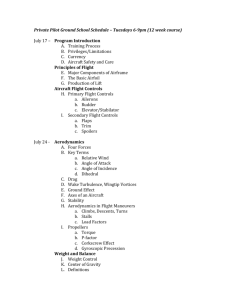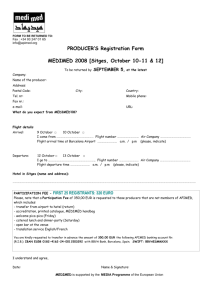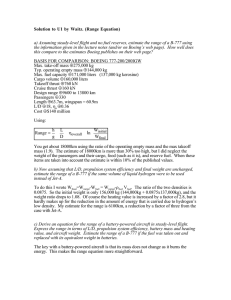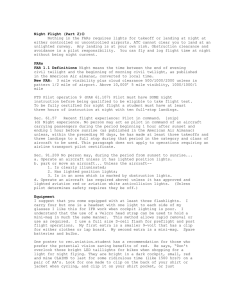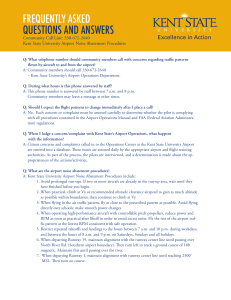January_2015 - First Flight Corp.
advertisement
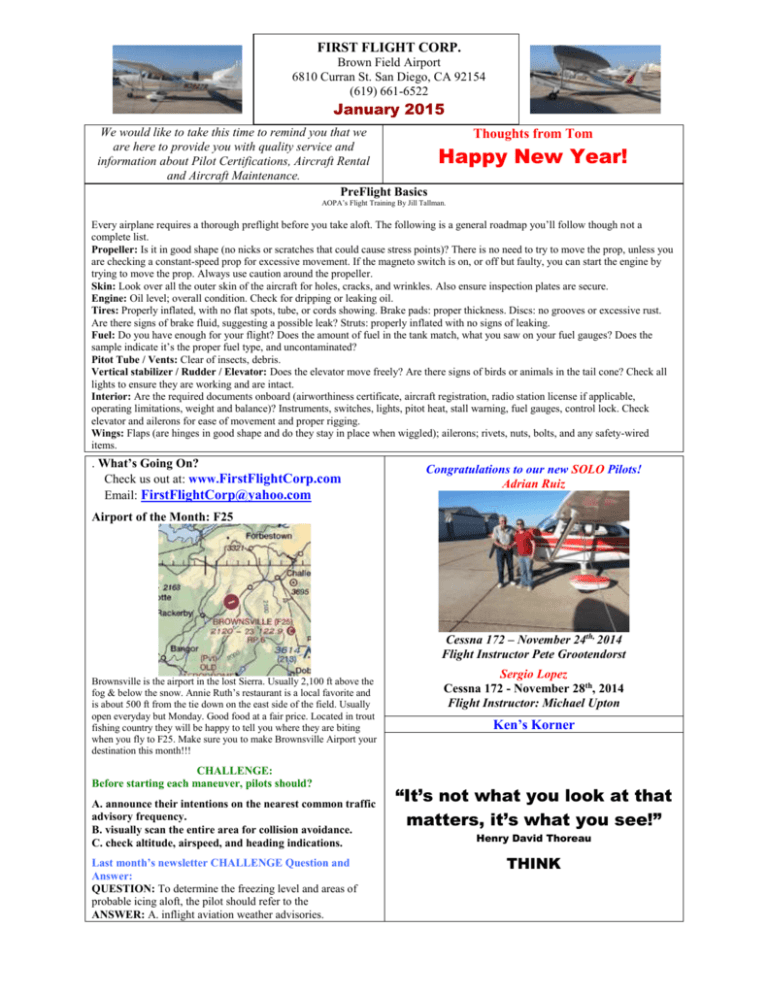
FIRST FLIGHT CORP. Brown Field Airport 6810 Curran St. San Diego, CA 92154 (619) 661-6522 January 2015 We would like to take this time to remind you that we are here to provide you with quality service and information about Pilot Certifications, Aircraft Rental and Aircraft Maintenance. PreFlight Basics Thoughts from Tom Happy New Year! AOPA’s Flight Training By Jill Tallman. Every airplane requires a thorough preflight before you take aloft. The following is a general roadmap you’ll follow though not a complete list. Propeller: Is it in good shape (no nicks or scratches that could cause stress points)? There is no need to try to move the prop, unless you are checking a constant-speed prop for excessive movement. If the magneto switch is on, or off but faulty, you can start the engine by trying to move the prop. Always use caution around the propeller. Skin: Look over all the outer skin of the aircraft for holes, cracks, and wrinkles. Also ensure inspection plates are secure. Engine: Oil level; overall condition. Check for dripping or leaking oil. Tires: Properly inflated, with no flat spots, tube, or cords showing. Brake pads: proper thickness. Discs: no grooves or excessive rust. Are there signs of brake fluid, suggesting a possible leak? Struts: properly inflated with no signs of leaking. Fuel: Do you have enough for your flight? Does the amount of fuel in the tank match, what you saw on your fuel gauges? Does the sample indicate it’s the proper fuel type, and uncontaminated? Pitot Tube / Vents: Clear of insects, debris. Vertical stabilizer / Rudder / Elevator: Does the elevator move freely? Are there signs of birds or animals in the tail cone? Check all lights to ensure they are working and are intact. Interior: Are the required documents onboard (airworthiness certificate, aircraft registration, radio station license if applicable, operating limitations, weight and balance)? Instruments, switches, lights, pitot heat, stall warning, fuel gauges, control lock. Check elevator and ailerons for ease of movement and proper rigging. Wings: Flaps (are hinges in good shape and do they stay in place when wiggled); ailerons; rivets, nuts, bolts, and any safety-wired items. . What’s Going On? Check us out at: www.FirstFlightCorp.com Email: FirstFlightCorp@yahoo.com Congratulations to our new SOLO Pilots! Adrian Ruiz Airport of the Month: F25 Cessna 172 – November 24th, 2014 Flight Instructor Pete Grootendorst Brownsville is the airport in the lost Sierra. Usually 2,100 ft above the fog & below the snow. Annie Ruth’s restaurant is a local favorite and is about 500 ft from the tie down on the east side of the field. Usually open everyday but Monday. Good food at a fair price. Located in trout fishing country they will be happy to tell you where they are biting when you fly to F25. Make sure you to make Brownsville Airport your destination this month!!! CHALLENGE: Before starting each maneuver, pilots should? A. announce their intentions on the nearest common traffic advisory frequency. B. visually scan the entire area for collision avoidance. C. check altitude, airspeed, and heading indications. Last month’s newsletter CHALLENGE Question and Answer: QUESTION: To determine the freezing level and areas of probable icing aloft, the pilot should refer to the ANSWER: A. inflight aviation weather advisories. Sergio Lopez Cessna 172 - November 28th, 2014 Flight Instructor: Michael Upton Ken’s Korner “It’s not what you look at that matters, it’s what you see!” Henry David Thoreau THINK

